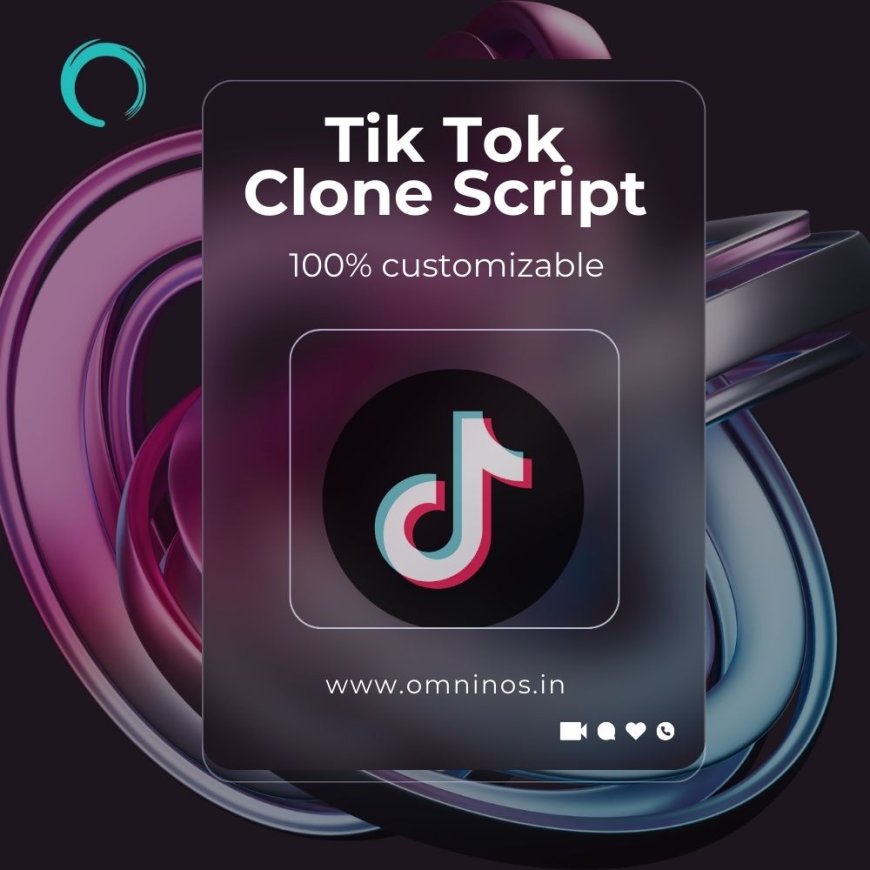Introduction to TikTok Clone Script Development

Developing a Tik Tok Clone Script involves creating a dynamic social media platform that allows users to create, share, and discover short-form videos. This comprehensive guide will cover the key features, technology stack, design considerations, and deployment strategies for building a successful TikTok clone.
Key Features of a TikTok Clone Script
Key features of a TikTok Clone include:
- Video Creation and Editing Tools: Users can easily create and edit videos within the app.
- Multimedia Sharing: Users can share multimedia content like videos and images.
- Duets and Stitches: Users can create duets by displaying another person's video alongside their own and integrate separate scenes from another user's video into their own.
- Music and Sound Library: Integration of a large music and sound library for users to lip-sync, dance, and create videos with popular songs.
- Live Interaction: Users with a certain number of followers can go live, interact with their audience, and receive gifts from followers in the form of coins.
- Personalized Feed: The app suggests content based on user preferences through its artificial intelligence system.
- Filters and Effects: Various effects and filters are available for users to edit and enhance their videos.
- User Profiles: Users can create profiles, follow other users, like, comment, and share videos.
- Social Sharing: Users can easily share their videos on social media platforms to gain more followers and viewership.
- Notifications: Users receive notifications for new followers, likes, comments, and other interactions on their posts and profiles.
These features collectively contribute to creating a dynamic and engaging user experience similar to TikTok.
Technology Stack for TikTok Clone Development
The technology stack for developing a TikTok Clone includes:
- iOS App Development:
- Programming Language: Swift
- Networking: Alamofire
- Android App Development:
- Programming Language: Kotlin
- Networking: OkHttp 3
- Back-end Development:
- Programming Language: Node.js
- Framework: Express 4
- Database: MongoDB, SQL, MySQL
- Cloud: AWS or Azure
- Tools:
- Storage: Amazon S3
- Signup: Amazon SES, Amazon SNS
- Notifications: Google Cloud Messaging for Android and Apple Push Notification Service for iOS
- Real-time Analytics: Azure Stream Analytics, Google Mobile App Analytics
- AR Filters: ML Kit, ARCore
- Geolocation: Google Maps API, MapKit/Core Location frameworks (for iOS)
- Chat: Twilio
The technology stack mentioned above is approximate and can vary based on specific project requirements, features, and goals.
User Interface and User Experience Design
Intuitive Navigation
Streamlined user flow and clear visual cues for seamless content discovery.
Immersive Experience
Full-screen video playback and intuitive gestures for a captivating user experience.
Personalized Feed
Intelligent content recommendation engine to keep users engaged and entertained.

 jeanwenham
jeanwenham 





